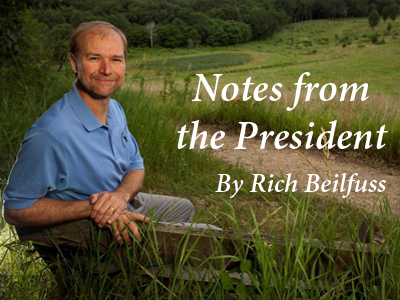Winter 2011/2012
This update is reprinted from the February 2012 issue of The ICF Bugle. Read the full issue
 Conservation leadership is at the heart of ICF’s global mission to save cranes and the diverse ecosystems, watersheds, and flyways on which they and all of us depend. We are dedicated to inspiring and empowering leaders at all levels. We provide training and practical experience for individuals and organizations engaged in community-based conservation, education, and outreach at key crane sites, building on their knowledge of cultural norms and practices. We also facilitate international leadership on key cross-cutting issues that affect cranes, such as sustainable water management. And sometimes conservation leaders find us, and together we tackle challenges beyond the reach of ICF alone. In this issue, we share stories from conservation leaders who are on the front lines of saving cranes and their landscapes on three continents.
Conservation leadership is at the heart of ICF’s global mission to save cranes and the diverse ecosystems, watersheds, and flyways on which they and all of us depend. We are dedicated to inspiring and empowering leaders at all levels. We provide training and practical experience for individuals and organizations engaged in community-based conservation, education, and outreach at key crane sites, building on their knowledge of cultural norms and practices. We also facilitate international leadership on key cross-cutting issues that affect cranes, such as sustainable water management. And sometimes conservation leaders find us, and together we tackle challenges beyond the reach of ICF alone. In this issue, we share stories from conservation leaders who are on the front lines of saving cranes and their landscapes on three continents.
In Africa, Griffin Shanungu brims with passion for the natural world and has worked tirelessly to save the Kafue Flats of Zambia, one of the world’s most important wetlands. Griffin spearheaded international efforts to control the invasive shrub mimosa that is destroying vast areas of this diverse wetland, and spent countless hours in the field documenting numbers and movements of vulnerable Wattled and Grey Crowned Cranes, Kafue lechwe, and many other species of conservation concern on the flats. Ursula Franke, who participated in our conservation training program here at ICF’s headquarters last fall, heads the Highveld Crane Conservation Project in South Africa. Ursula engages local landowners (more than 70) in developing biodiversity stewardship agreements aimed at securing key wetlands and grasslands for cranes and other species in this region. Last year, Ursula received the Conservation Achiever Award from the Endangered Wildlife Trust (ICF’s partner in Africa), their highest accolade for a staff member. Ursula writes about her ICF visit on page 5 of this issue.
Dr. Su Liying has been at the forefront of our conservation efforts in China for three decades. Since initially working as a researcher of Red-crowned Cranes at Zhalong Nature Reserve in 1982, now as an adjunct professor at the Northeast Forestry University in Harbin, Liying engages and inspires university students to develop conservation skills and ethics through their shared passion for cranes and wetlands, a vital step for the next generation as China’s global influence increases over time. Liying brings these cadres of inspired students to the wetlands to monitor changes and to share their knowledge and enthusiasm with the local people who live near the cranes. Read about their adventures on page 6.
And here in North America, environmental lawyer and Renaissance man Jim Blackburn and his team at The Aransas Project (TAP) are national conservation heroes for Whooping Cranes and the communities that depend on the coastal estuaries of Texas for their livelihoods. In December, TAP went to court as a last resort to argue that water management practices in the San Antonio and Guadalupe rivers were violating the federal Endangered Species Act. TAP contended that allowing so much water to be removed from the rivers such that the bay salinity was changed beyond what drought would cause, led to the reduced fresh drinking water and food supply that ultimately caused the death of at least 23 Whooping Cranes during the winter of 2008- 2009. Through 10 expert witnesses, including ICF Co-founder Dr. George Archibald, and five citizen witnesses, TAP wove together the complex evidence that links the fate of Whooping Cranes – and all who depend on the bays for their livelihoods – to freshwater inflows (learn more about ICF’s work in the Guadalupe River basin). They expounded the new thinking that is needed to address the inequitable and unsustainable use of fresh water in the river basin, and offered clear answers in the form of remedies that create a balance between the economic requirements of the basin and the inflow needs of the bay and its biodiversity. At the conclusion of the two-week trial, Blackburn wrote, “The issues before the Judge are extremely difficult. The stakes are high, especially as we find ourselves today in the midst of another severe drought. But I rest much easier at night knowing that I did my best to try and protect something truly important. There is no price on the Whooping Crane. There is no price on being able to take a young boy or girl to the bay and catch a fish or see a shrimp jump out of the water or catch a crab or see a beautiful pink bird gliding across a coastal flat in the early morning sun. Some things are simply priceless.”
We couldn’t agree more, and are indebted to Jim and his team, and to Griffin, Ursula, Liying, and all our conservation heroes who make the world a better place.
